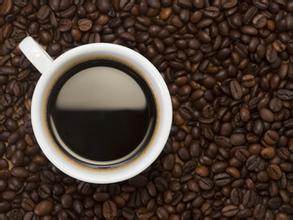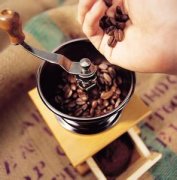Coffee roasting CoffeeRoasting
Baking tool
Roaster, divided into three types: direct fire type, semi-hot air direct fire type and hot air type. At present, the latter two are the mainstream.

Direct-fired cheese is the earliest baking tool used. Error fallacy: the heat conduction speed of iron is slow; the baking time is long; the heat is wasted; the raw bean touches the drum wall for too long and is easy to be scorched, resulting in bitterness and scorching taste; debris in and out of the barrel attached to the coffee bean profile will muddy the flavor.
Semi-hot air direct fire: improved and manufactured by VanGupen, a German from 1870 to 1920. In 1907, the German Perfect roaster began to use this concept, using gas heating, and there is a fan, half of the hot air into the drum, half to the outer heating drum. So far, the German Probat drum roaster is famous all over the country. In addition, Diedrich of Idaho took the lead in using gas-activated infrared heat source (Gas-Infrared) in 1987 to make temperature control more accurate and become the number one brand in North America.
Semi-hot air direct type, directly heat the drum with the fire source, at the same time bring the hot air to the drum, promote the heating speed, and blow away the debris, so as to produce balanced and clean coffee beans.
Hot air, a pioneering work of the 20th century, uses hot air to bake coffee beans to improve roasting efficiency. In 1934, the Thermonro roaster (JabezBurnsThermalo), a large hot air roaster, was made by the Bourne Company in the United States.
The flow-bed roaster (Fluid-BedRoaster) blows the raw beans with hot air and makes them fly up and down. In 1976, Michael, an American. MichaelSivetz designed a flow-bed roaster. Eon, a well-known Australian coffee expert. IanBersten also designed and manufactured fluidized bed roasters. When using this roaster, the coffee beans fall after being blown to the high point and are roasted by hot air again, which can make the coffee beans roast evenly. However, the smoldering of poor metal rollers is thought by some to be missing a taste.
Coffee roasting is a process of high temperature differentiation (Pyrolysis), which completely changes the substance inside the raw bean, produces new compounds, and combines to form aroma and mellow flavor. This kind of infection only occurs at high temperatures. In fact, in the coffee handling process, baking is the most difficult model, it is a kind of science, but also a kind of art.
Dehydration, in the early stage of baking, raw beans begin to absorb heat, and the internal water gradually evaporates. At this time, the color gradually changed from cyan to yellow or light brown, the silver skin began to fall off, and a faint smell of grass could be smelled. The primary impregnation at this stage is the removal of moisture, which accounts for about half of the baking time. Because water is a good conductor of heat transfer, it helps to bake the internal substance of coffee beans. Therefore, although the aim is to remove water, the baker will make good use of the temperature of the water and control it properly so that it will not evaporate too quickly.
Cooling (Quenching), coffee should be cooled immediately after roasting, quickly curb the high temperature cracking and infection, and lock the flavor. Otherwise, the high temperature in the beans will continue to occur and the fragrant substances will be burned away. There are two ways of cooling, one is air-cooled, the other is water-cooled. The air-cooled type is slow, but it is clean and does not pollute, and it can better retain the fragrance of the coffee, so it is used for high-quality coffee. Water-cooled coffee beans are sprayed with a layer of water mist to make the temperature drop rapidly, which requires careful calculation, and will increase the weight of roasted coffee beans, which is generally used for commercial coffee roasting.
Burst sound, raw beans from endothermic to exothermic, the internal substances out of the body, will form a more obvious sound. The first time a higher voice, clear and parting, the second more quiet, detailed and concentrated. Because the relationship between bursting sound and temperature is very high, it can enrich the temperature of baking, which is the main basis for bakers to judge the baking degree.
The transformation caused by baking is very complicated, and although scientists have studied and analyzed it incessantly, it is still impossible to get a full picture. As a result, there are the following changes:
Missing weight: the moisture content is reduced from 13% to 1%, and the missing weight is about 12%-21%. The higher the baking degree, the more the missing weight.
Volume expansion: after baking, the volume of coffee beans will increase by more than 60%.
Cell pore size: the cell wall of raw bean is hard and the cell is empty and locked, so it is not easy to deteriorate. However, after baking, the cell wall becomes very cowardly, the cell pore is large, and it is easy to lose the internal material.
Formation of carbon dioxide: high temperature differentiation and dipping makes the carbohydrates inside the coffee beans differentiate and connect with other substances to form a large amount of carbon dioxide, which resides in the interior of the coffee beans.
Change the organizational structure: after baking, carbohydrates dropped sharply from 58.9% to 38.3%, and acids (fatty acids, tannins, chloric acid, etc.) dropped from 8.0% to 4.9%. Under the condition of high temperature pyrolysis, these substances are reorganized and changed into caramel, carbon dioxide and some volatile substances. This preserved squid caramel accounts for 25% of the quality of roasted beans, forming the sweet taste of coffee. Fat accounts for 16.2% of raw beans, but it is promoted to 17% after baking, which is the origin of mellow taste and thick feeling. Caffeine levels barely changed. The bitterness of heavy-roasted coffee is not as high as the amount of caffeine in it.
Baking degree
The law of regional distinction in the Pacific Ocean:
LightRoast (light baking): it also has the smell of grass, no aroma and mellow taste.
CinnamonRoast (cinnamon baking): coffee beans turn cinnamon
MediumRoast (medium baking): has a strong sour taste.
City+Roast (city baking): baked to the first burst, just about to enter the second burst sound.
CityRoast (High Color Baking): sour, bitter and sweet begin to strike a balance.
High temperature differentiation, baking to 160 degrees around, the water inside the beans will evaporate into gas, starting to remove the outside of the coffee beans. At this time, the interior of the raw bean changed from endothermic (Endothermic) to exothermic (Exdothermic), showing the first burst sound. After the first burst, it turns to endothermic again, and the internal pressure of the coffee bean is extremely high, up to 25 atmospheric pressure. High temperature and pressure begin to deconstruct the original tissue to form new compounds that foster the taste and taste of coffee. When it reaches 190 degrees, the conversion between endothermic and exothermic occurs again. Of course, high-temperature pyrolysis dyeing continues to occur, coffee beans changed from brown to dark brown, and gradually entered the stage of heavy baking.
FrenchRoast (Fatu Baking): very bitter.
ItalianRoast (Italian roasting): the raw material of Italian espresso.
The baking process is divided into three stages:
Small amount of baking
FullCityRoast (city-wide roasting): roasting until the second burst is in progress, is a favorite of select coffee roasters.
The American Fine Coffee Association (SCAA) is used to analyze and analyze the color of coffee and the level of caramel coking measured by Elon instrument. Set black to 0, white
The color is set to 100, divided into 8 equal parts, representing 8 baking grades.
Roasting differences between boutique coffee and commercial coffee:
Choose the roasting method according to the properties of coffee beans (moisture content, hardness, year, and tested by sample cup)
The baker looks after the whole process during the baking process (pay attention to the change of temperature and time, listen to the popping sound and observe the change of color and luster)
Delivery immediately after baking (DeliveratTheSameDayOfRoasting).
Important Notice :
前街咖啡 FrontStreet Coffee has moved to new addredd:
FrontStreet Coffee Address: 315,Donghua East Road,GuangZhou
Tel:020 38364473
- Prev

Roasting: an important step in nurturing the fragrance of coffee
Roasted coffee is the most important place to give birth to the fragrance of coffee. In the roasting world, there is no barrier-free passport. Americans like shallow roasting and British people like deep roasting. There is no uniform scale for coffee roasting. Have you prepared raw beans and decided to roast coffee beans with exclusive flavor? If not, you might as well use your imagination and follow me.
- Next

Explanation on the baking stage of coffee beans
The reason why coffee is loved by people lies in the aroma formed after roasting and the taste when drinking, because the coffee beans themselves do not have any special taste. "baking" is to change and reorganize the substances inside the raw beans to form a new structure and become people's favorite drink with a strong fragrant and mellow flavor.
Related
- What is the meaning of lactic acid fermentation with coffee bean treatment?
- How to judge the state of foam by sound?
- How does the latte pull out the unicorn pattern? Come to get for a little trick to improve the flower pull!
- Will flower pulling affect the taste of the latte?
- Do you know the history of coffee?
- The difference between honey treatment and sun washing what is raisin honey treatment?
- What kind of milk can a novice use to make coffee foam to keep the foam longer? The correct method and skills of milking tutorial sharing
- Why do washed coffee beans taste sour? Flavor characteristics of washed Coffee
- Introduction to the skill of how to practice the size and height of water injection around the circle of hand-brewed coffee
- How do beginners practice coffee flower drawing from scratch?

